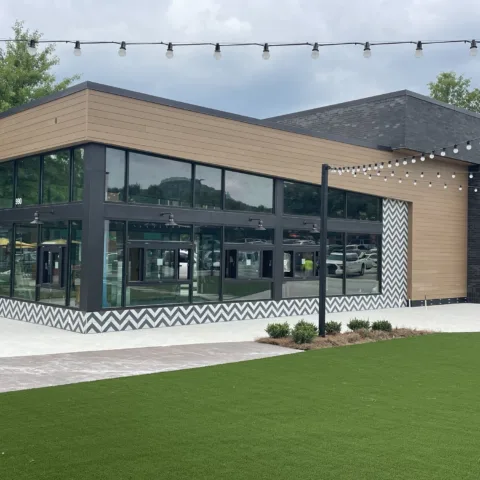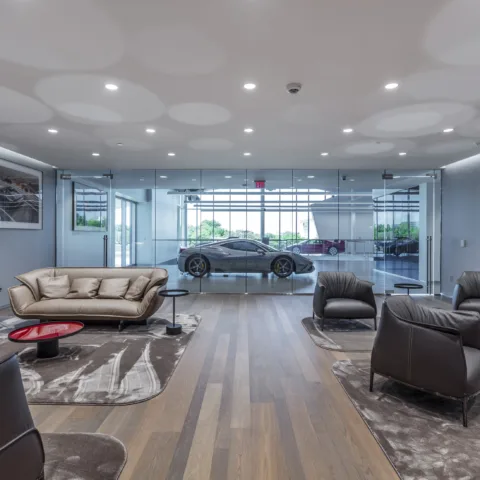Over the past ten years, cities like Nashville have been the site of unprecedented levels of new urban development construction projects. New construction is always exciting, but it also produces new challenges for stakeholders, real estate investors, and commercial construction professionals to navigate.
At Crain, we’ve embraced this growth as an opportunity to lean in, learn, and partner with our clients and subcontractors. Together, we find creative solutions and implement ideas that everyone involved can be proud of. Whether it’s serving as the contractor for adaptive reuse projects in Downtown Nashville or working on tight site urban projects in Midtown, we’ve learned numerous lessons over the years that enable us to help our clients navigate the complexities of urban development.
4 Keys to an Effective Urban Development Construction Project
While every project provides its own unique set of obstacles, here are four keys to streamlining the construction process for commercial buildings in urban environments:
1. Collaborate with city officials to minimize public impact.
Most urban settings are already places with heavy traffic — both vehicles and pedestrians. A new construction project can create serious issues. That’s why it’s important to proactively plan, obtain the proper permits, and partner with city officials. This can minimize the impact made on an urban environment. With a plan in place, we can create efficient traffic flow strategies for various stages of the construction process.
Project Example: A few years ago, our team had the opportunity to renovate the famous Acme Feed & Seed located on the corner of 2nd Avenue and Broadway in downtown Nashville. The project took place during the summer, the busiest time of year for the city. We carefully and proactively coordinated with Metro Public Works, Nashville Convention and Visitors Corporation, and other Metro departments so crews could work through major events like CMA Fest and the 4th of July. We carefully navigated street closures to minimize the impact on downtown crowds.
2. Take time to get in-depth knowledge of existing structures that might create roadblocks.
Every urban project is developed on or around structures that have been there for decades. There are mechanical, plumbing, electrical, and structural elements that often need to be integrated into the design and construction process. This is where our pre-construction team is able to showcase their expertise. By getting involved early in the process, we’re able to work with all the stakeholders and provide insights to help avoid future obstacles.
Project Example: The site for our TownePlace Suites Project in downtown Nashville was located on top of a 100-plus-year-old sewer tunnel that is still a vital part of the city’s sewage system. Our team was able to work creatively throughout the entire process to solve issues as they arose — from demolition to pouring the foundation to finalizing construction. We were even able to design a way for Metro Nashville to always have perennial access to the tunnel in the event of future repairs.
3. Recognize how to navigate tight site challenges.
Because you’re building in areas that are already developed, there’s not a lot of room for mistakes. Tight site projects create unique challenges for contractors. This can range from building two feet from an established structure to navigating logistical challenges for material delivery and system installs.
Project Example: The Aerston Midtown sits on an extremely tight urban site located on a major corridor that runs through the Vanderbilt University campus and into downtown. Our experience with high-rise concrete structures on tight job sites enabled us to work directly with the development and design teams to understand constructability and add value to the project from conceptual design throughout the construction process.
4. Implement proper safety measures for populated areas
Safety is important on any job site. It’s especially important in urban areas where you’re working with the public nearby. Safety issues can cause great risk to a project, and it’s important for project managers to find solutions to mitigate potential issues while on site.
Project Example: As a STEP Safety Management System GOLD recipient, our team has worked with city officials on multiple projects to implement effective safety measures for the public. During the renovation of the Fairline Hotel, our team worked with Metro Public Works to develop a plan to keep pedestrian traffic flowing while the sidewalk was closed on the busy corner. Pedestrians were diverted through a downtown alley to minimize the inconvenience.
Looking for a Contractor for Your Next Urban Development Project?
Whether you’re looking for a partner to help in hospitality, mixed-use, or office construction, our team at Crain has the experience and insights to help. Connect with our team to share a few details about your project. Our mission is to construct buildings and relationships that last a lifetime.



